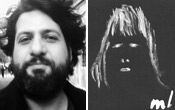São Paulo biennalen

Den 30. utgaven av Sao Paolo biennalen åpnet 7. september og kurator Juan A. Gaitan kommer til Rogaland Kunstsenter for å fortelle om sitt inntrykk av biennalen. Vi kommer også til å se på historien til verdens nest eldste kunstbiennale, og hvilken rolle biennalen har i dag.
The São Paulo Biennial (Bienal de São Paulo) was founded in 1951 upon the initiative of industrialist Francisco (Ciccillo) Matarazzo Sobrinho (1898-1977). It is the second oldest art biennial in the world after Venice (in existence since 1895), which serves as its role model.
Its initial aim was to make contemporary art (primarily from Western Europe and the USA) known in Brazil, push the country’s access to the current art scene in other metropolis, and establish Sao Paulo itself as an international art center. Naturally, the biennial always serves to bring Brazilian art closer to foreign guests.
Since the 4th edition in 1957, the São Paulo Biennial has been held at the Pavilhão Ciccillo Matarazzo in the Parque do Ibirapuera. The pavilion was designed by a team lead by Oscar Niemeyer and Hélio Uchôa, and provides an exhibition space of 30,000 sqm.
As with its Venetian role model, São Paulo hosts national presentations as well as international exhibitions held under the direction of rotating chief curators.In addition to the art biennial, an International Biennial for Architecture and Design has been held since 1973.
Juan A. Gaitán (CA) was curator at Witte de With from 2009 to 2012. He trained as an art historian and aesthetic theorist at the University of British Columbia in Vancouver. Past exhibitions outside of Witte de With include Models for Taking Part (Presentation House, Vancouver and Justina M. Barnicke Gallery, Toronto, 2011) and Exponential Future (Morris and Helen Belkin Art Gallery, Vancouver, 2008). His most recent essays have been published in Afterall, The Exhibitionist, and as part of the series Ten Fundamental Questions of Curating in Mousse magazine.